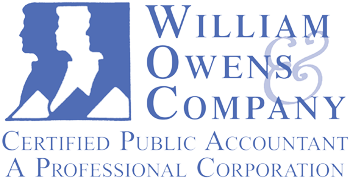
No matter what kind of business you operate, positive cash flow is vital to its success. It’s so important that some businesses end up failing because they can’t get a handle on cash flow. What can happen is that a business ends up needing to take out loans to bridge the time between services rendered and payment received. The loans add up and become yet another set of bills that the business has trouble paying because of poor cash flow. Other scenarios can evolve due to poor cash flow, too. But no matter what the situation, it doesn’t have to happen to your small business.
Understanding the Pain Points
Once you’re in a cash flow bind, it can be hard to look back and recognize the pain points that got you into this mess. But having forensic knowledge can help you to avoid complications in the future.
Late Payments From Clients
One of the most common problems that small businesses face is late payments from clients. There can be all kinds of reasons why a client pays late. One possibility is that they see your small business as non-threatening. Your invoice may get moved to the back of the line behind larger companies that have serious ramifications for overdue bills.
High Overhead Costs
Many small business owners try to keep things simple by controlling overhead. They may work from home, or hire contract labor instead of full-time help. But not all small businesses have the luxury of being able to have low overhead. And those monthly overhead bills can add up, draining away your liquidity and adding to your cash flow problems.
Season Fluctuations
If you have a seasonal business, you need to be adept at stretching your cash flow so it covers the months where you’re not bringing in as many sales. Even then, if you have a bad season, you could be in for an even rockier off-season time, trying to ride it out until your high season hits again.
Unexpected Expenses
Finally, unexpected expenses, such as equipment breakdowns or emergency repairs, can put a huge strain on a business's cash reserves. Without adequate planning and sufficient cash reserves, these unexpected costs can lead to cash flow problems.
Actionable Steps to Improve Cash Flow in Your Small Business
There are real, actionable steps that you can take today to improve cash flow in the future, and get money in the bank today. Here are some to consider:
Leverage Your Status as a Small Business
It’s easy for your clients to ignore bills from large, faceless corporations. That is, until those giants do things like cut off the internet, the electricity or the phone service. As a small business owner, you don’t have the power to do that, nor would you want to. But you have a different kind of power. You have a face and an identity. Unlike those big corporations, you can get your client on the phone and remind them that you’re just a small operation that needs to pay bills to stay in business. Let your clients know that you’re relying on their timely payment. Chances are, you can get a payment agreement while you’re on the phone.
Offer Multiple Payment Options
Sometimes your client may be strapped for cash just as you are. This is a good time to let them know that you can accept credit cards for payment, too. If they still balk, let the client know you’re willing to accept partial payments. At least this way you’re getting some money coming in, and engaging with the client in a helpful manner that will make them want to continue doing business with you. Next, make sure you offer these payment options on all your invoices going forward, so your other clients know that they have multiple payment options.
Manage Overhead Costs
If overhead costs are eating your cash flow, it’s time to look at streamlining. Commercial real estate values are at all time lows thanks to more people working from home. Initiate some competition by getting lower estimates on other real estate locations. Let your landlord know that you’re looking elsewhere. It’s possible that they’ll be willing to come down in rent, in which case you wouldn’t have to move. But just in case, be ready to make a move if you find something where you can pay less overhead.
Build a Cash Reserve
It can be hard to build savings when you’re spending every penny on bills. But every business needs cash reserves, especially those with cash flow problems. Take the advice of many financial experts, and pay yourself first. Each time you receive a payment, take a certain percentage and tuck it away into a business savings account. You’ll be glad it’s there when you have an unexpected expense.
Get a Line of Credit
Unlike a loan, a line of credit allows you to borrow only what you need, when you need it, plus you only pay interest on the amount borrowed. This flexibility can help cover short-term cash flow gaps without the burden of long-term debt that often signals the demise of small businesses. Be sure to make regular payments to pay down the debt, though, so the line of credit is always available to your business when you need it most.
Improve Inventory Management
For businesses that carry inventory, managing stock levels efficiently is essential. Overstocking ties up cash in unsold goods, while under stocking can lead to lost sales. Implement an inventory management system to track stock levels in real time, forecast demand accurately, and reorder supplies just in time to meet customer needs.
With these actionable strategies in place, you will be better able to work your way out of cash flow problems in your small business. And remember, your CPA has a lot of experience in helping business owners with financial conundrums. Contact yours today for personalized help.
by Kate Supino
